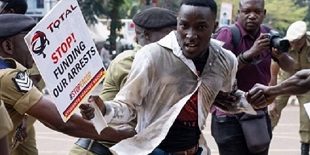
Africa’s carbon credit market is experiencing a significant surge in investor interest, thanks to a surge in fresh investment from the Gulf. But more regulation, stricter auditing and greater transparency is required, according to industry insiders.
SPECIAL REPORT | BIRD AGENCY | Africa is a prime target for new multimillion-dollar carbon offset projects as companies increasingly seek to blunt the effects of their carbon footprints.
In September, the United Arab Emirates (UAE) announced plans to shell out US$450 million to secure carbon credits from various carbon offset initiatives on the continent.
Already, carbon offset firms are snapping up new deals. Eco Netix, a measurement, reporting and verification (MRV) firm, told bird story agency that together with sustainable investment company ASC Impact, the firm had inked a deal with Emirati investors for millions in carbon stocks for the UAE government, which needs to offset 136 million tonnes by 2030.
New markets in the Gulf offer a bridge between investors and African states aiming to monetise their natural resources sustainably.
According to Eco Netix founder, Jakob Zenz, the factors attracting investors to Africa’s carbon credit market are its rich biodiversity and extensive arable land. These assets are ideal for carbon offset projects, such as reforestation, sustainable agriculture, and renewable energy initiatives.
“They have the largest carbon sinks in the world. The Congo Basin, for example. All of these rain forests, this is besides size, availability, young people, willingness to work, educated people,” Zenz noted.
“So all of these factors can make a project very viable and in an age of digitisation, information is available throughout Africa. Everyone has a smartphone. So communication becomes easy. Mobile money makes it easy to transact throughout the continent.”
In Tanzania, Eco Netix is working on a mangrove restoration project covering 32,000 hectares, with 6,000 to 8,000 hectares identified for restoration. The cost of restoring each hectare is approximately US$3,000, leading to a total investment of US$18 to US$24 million for the project.
ASC has concessioned over 300,000 hectares for reforestation and is targeting an investment of €400 million, focusing on climate change mitigation in vulnerable areas.
The coalition, operating under the aegis of Sustain Now, aims to market 60 million tons of carbon credits in the UAE by 2030, leveraging key government and corporate relationships. Sustain Now is also expanding its land holdings for mangrove and forest projects, targeting an additional 2 million hectares within a year, and is actively seeking funding from the Middle East for these projects.
ASC’s Karl Kirchmayer said that after a successful run in Congo Brazzaville, Ethiopia and Angola they are planning new projects in other African states.
“All these countries are fitting perfectly in our strategy, to invest in areas where we have the best growing conditions. We have very good soil and rainfall,” he said.
Mangroves, often referred to as ‘super trees”, are central to these initiatives. Offering both environmental and economic benefits, mangrove forests are ideal candidates for carbon offset projects.
“I call it the Rolls Royce of carbon credits. It’s a plant that has an incredible biodiversity system around it and… it’s storing, like really substantial amounts of carbon. It’s very permanent because it grows for so long.”
However, the success of carbon projects hinges not just on financial investment but also on the integration of technology for transparency and accuracy. Recently, investigative reports have found glaring gaps in audits of carbon credit schemes, leading to accusations of “greenwashing” by some of the world’s most carbon-intensive companies.
In the past year, the carbon market faced significant scrutiny over concerns of over-crediting, stemming from the lack of a clear baseline on what constitutes a carbon credit.
Zenz emphasised the crucial role of technology in ensuring the integrity of carbon credit projects.
“What is important is moving from one-time audit to real-time monitoring,” he asserted.
Eco Netix now deploys a range of digital tools, including proprietary satellite imagery and remote sensing, to monitor the progress and impact of their projects.
This approach addresses the critical challenge of verifying the actual carbon sequestration achieved.
“We want to bring the transparency back into the carbon credit market. And we do that by having everything, the whole project, digitally available,” he explained.
This digital availability encompasses not just the tracking of the projects but also the quantification of the carbon captured, a key metric in determining the success and value of these initiatives.
****
SOURCE: Seth Onyango, bird story agency
 The Independent Uganda: You get the Truth we Pay the Price
The Independent Uganda: You get the Truth we Pay the Price



Dear sir
I hope Christmas was well celebrated with great joy in your family , well I am interested in carbon credits facility with your organization and I have planted over 30 hector of trees we supervised by national forests authority of Uganda any opportunities for such shall be greatly appreciated thank
Asea Geoffrey MD MAN engineering Uganda limited